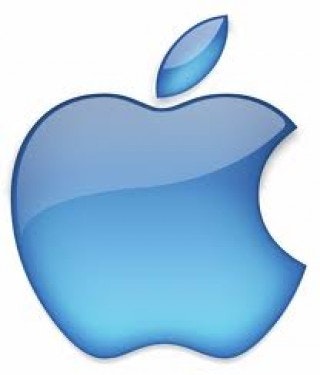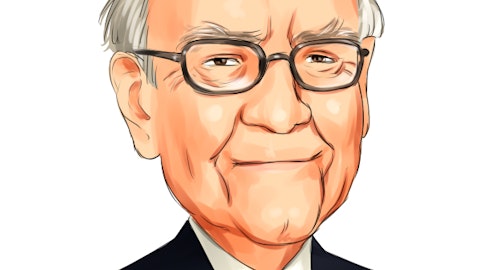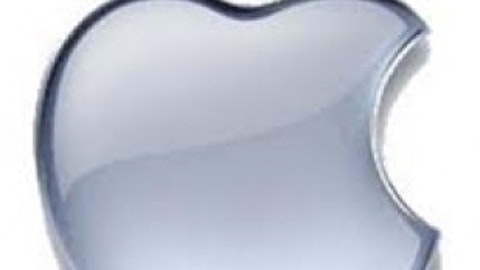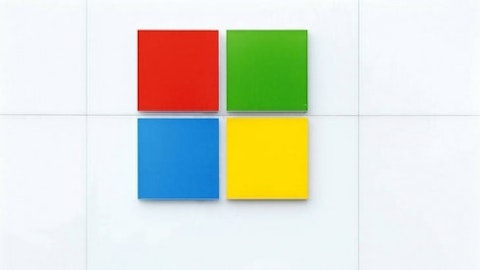Apple Inc. (NASDAQ:AAPL)’s plummeting share price presents investors with at great entry point into the smartphone market. Google is much too pricey by comparison, and competitors like Nokia Corporation (ADR) (NYSE:NOK) and Research In Motion Ltd (NASDAQ: BBRY) seem to require needless extra risk. Instead, investors seeking exposure to the smartphone market should opt for Apple or for Corning Incorporated (NYSE:GLW) , an attractively-priced smartphone component maker.

Apple and Corning trade at low price-to-earnings multiples and have positive free cash flows:
| NOK | Nokia | NA | 0.35 | 1.27 | NA | 0.69 | 5.0% |
| BBRY | BlackBerry | NA | 0.83 | 0.84 | NA | NA | 10.0% |
| GLW | Corning | 10.74 | 2.27 | 0.85 | 19.49 | 0.16 | 12.0% |
| AAPL | Apple | 10.04 | 2.52 | 3.27 | 9.49 | NA | 19.0% |
| MSFT | Microsoft | 15.04 | 3.14 | 3.16 | 11.1 | 0.2 | 8.4% |
| GOOG | 24.35 | 5.2 | 3.64 | 19.53 | 0.08 | 14.3% |
Analysts also anticipate excellent growth for Corning and Apple Inc. (NASDAQ:AAPL). Nokia and BlackBerry, though cheaper by their price-to-sales multiples, are not profitable, and face challenges that dominant companies like Apple do not.
There are three competing theories for Apple’s low price multiples. The first rests on the idea that the smartphone market is becoming increasingly price-competitive, and that this will cut into Apples margins and drop its profits. A cheaper smartphone could be the solution for developing markets, since the available iPhones are still out of reach for many, but it is still unclear if Apple will chose that path. Other phone companies are already cashing in on the Indian and Chinese smartphone markets, and Apple needs to act fast if it intends to benefit as well.
The next theory used to justify Apple’s price drop is sales of shares by institutional investors. For example, Franklin Templeton Investments reduced its holdings in Apple by almost half because the investment manager sees Apple Inc. (NASDAQ:AAPL) as fumbling high-growth potential emerging markets. Franklin Templeton Investments felt that the U.S market was already saturated, and there was need to introduce a cheaper phone to attract potential markets like India and China. Templeton’s portfolio manager George Russell stated that the company was forced to reduce its holdings in Apple Inc. (NASDAQ:AAPL) to 4.2 percent of assets, which is much lower than its earlier 7 percent allocation.
A third justification is the idea that Apple Inc. (NASDAQ:AAPL) somehow lost its mojo, and that the market knows it. Some people site the leadership change from Steve Jobs to Tim Cook, while others point to the company’s purported lack of strategy.
Nokia needs a turnaround, fast. Nokia’s smartphone market share in China is 1%, a shockingly low number considering that only two years ago Nokia controlled half of the market in China. Its rivals, Apple, Samsung Electronics, Lenovo Group, and China Wireless Technologies have left it in the dust.
Worse yet, Nokia is fumbling its chances for a comeback. Supply constraints restricted sales for the Chinese New Year shopping season. Nokia acknowledged the supply constraints last month and assured investors on a Jan. 24 conference call that it is working to solve the problem. Nokia’s Chief Financial Officer Timo Ihamuotila said, “We are now building more capacity as we speak to match the demand, and we would expect that at some point in not too distant future, we would be in a situation where we are no longer constrained.”
Nokia CEO Stephen Elop concentrated on the North American market for its Lumia smartphone, having deals with two of U.S.’s largest wireless carriers as a strategy, but the move was not well-received, as it only sold 700,000 handsets last quarter, against Apple’s and Samsung’s combined 35 million units. As the Chinese smartphone market overtook the U.S., India, and European countries, Nokia is planning to re-focus in China with profitable handsets and be more aggressive with lower priced models, noting that demand currently outstrips supply.
Nokia’s two decades in China has given the company an extensive sales force and distribution network. The challenge is to revive the brand’s presence, rebuilding its image since the brand slipped from the consumers’ awareness for lack of “star products,” according to Sandy Shen, a Gartner analyst. Nokia’s deal with China Mobile improves the former’s chances for a comeback; however, it should be careful and be sure to meet the expectations of old customers who are looking for upgrades. Lin Sanmu, a long time Nokia user, said, “I got five years of use out of my last Nokia phone and that’s pretty good. Nokia is good quality. Now, I’m looking to upgrade from a feature phone to a smartphone so I can use the Web.”
Corning, the glass-maker for phones, tablets and flat-panel televisions, saw its share price increase by 6.1% to $12.80 in early trading Jan. 31 after reporting sales and profit for the fourth quarter that exceeded analysts’ expectations. Profits reached $0.34 per share on buoyant sales, which rose 14% to $2.15 billion, topping analysts’ average projection of $0.32 per share and sales of $2.06 billion, according to Bloomberg data.
The popular Gorilla Glass, a damage-resistant screen material used in tablets and smartphones, reached over $1 billion in sales for the first time in 2012. Large televisions also contributed substantially to the company’s improve performance after a decline in the prices of (liquid-crystal-display) LCD. Chief Financial Officer Jim Flaws said, “It’s a strong sign that’s we’re beginning to come to the end of these LCD price declines, which we believe will be moderate all year. We’re seeing the large-size televisions grow very nicely.”
Despite Corning’s improved performance, however, the company’s profit margin decreased to 42% for the last quarter from 44% a year earlier, amid competition and a barely moving economy. To be fair, this news is not in any way terrible enough to warrant its price-to-earnings multiple.
Investors should consider Corning and Apple as buy candidates.
The article Smartphone Wars Create Rare Buying Opportunities originally appeared on Fool.com and is written by Bill Edson.
Copyright © 1995 – 2013 The Motley Fool, LLC. All rights reserved. The Motley Fool has a disclosure policy.





